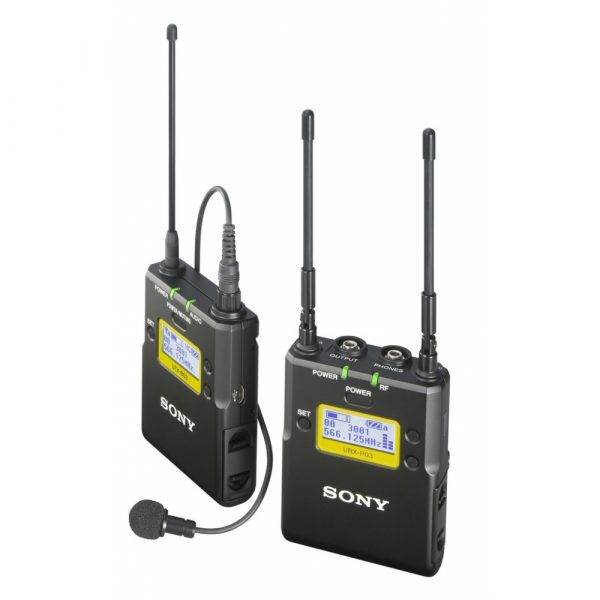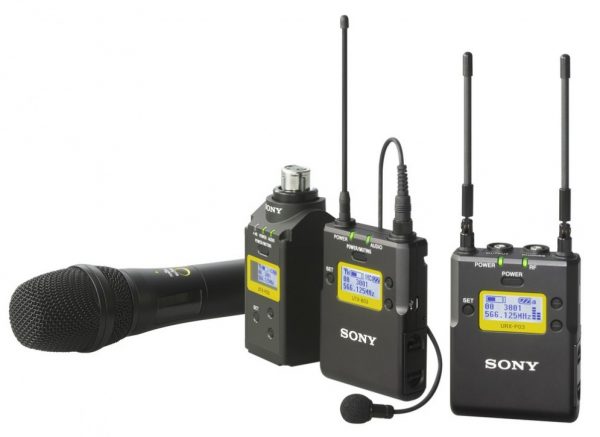By site editor Dan Chung:

Last month, Sony took the wraps off their new UWP-D series of wireless mics. While it may look similar to their exisiting UWP range there are some significant differences. Most obvious is the move to a digital hybrid system previously only seen in much more expensive systems. Various configurations are available with different combinations of body pack and handheld transmitters.
Hybird wireless uses a digital compander to process the audio signal prior to FM transmission to the receiver (the transmission part is still analogue). At the receiver end there is a matching digital expander. While this may sound a little complicated, what this means in practice is that you should get improved sound quality compared to a regular analogue system. Sony claim the UWP-D provides ‘impressive natural sound quality’.
It also has wide switching RF bandwidth. If you are familiar with wireless mics you will know that they generally come in pre-allocated frequency blocks which vary from country to country depending on local regulations. Within the range of each block you can select the precise channel and frequency you want to use to best avoid interference from other RF sources. The new UWP-D has blocks with wider than usual bandwidth, meaning you get a far greater choice of channels and frequencies from one transmitter/receiver combo.
There is a clear channel-scan function on the receiver that allows the user to rapidly ascertain available free channels. One the channel is set on the receiver there is an IR sync function that can communicate this to the transmitter – a time-saving function not previously seen on entry level Sony wireless.
The UWP-D is also a true diversity receiver with two antennae for improved reliability of the wireless link. Inside the receiver are two individual receiver sections with a comparison circuit that is continuously selecting the better of the two signals for use.
There is also a compatibility mode to allow it to work with the existing UWP range.
The UWP-D runs on AA batteries but can also be powered via USB which is great for extended use in the field, where it can be run off small USB battery packs. If your camera setup is like mine and has a battery plate that provides 5V USB power then this is even better as you could power the receiver all the time – meaning one less set of batteries to worry about. There is also an optional lithium-ion rechargeable battery pack too.
For DSLR users who are plugging the receiver directly into the camera the UWP-D receiver has output gain control. This means you can fine-tune the output level to match the camera’s setting, keeping the camera’s pre-amp gain closer to the optimum level for lower noise.
DSLR users with cameras without a headphone jack will also benefit from the inclusion of one on the receiver. Of course this only monitors the signal going into the camera, but at least you can hear that the wireless system is working as it should.

Construction is metal and should stand regular use. The receiver is also significantly smaller than the previous UWP model and therefore easier to mount on top of a camera or rig. There is also a clear backlit LCD display on both transmitter and receiver.
There is a new handheld mic which has interchangeable capsules – a feature generally found on higher end systems. Alternatively there is also a plug-on transmitter that connects to XLR mics and turns them into a handheld wireless system. The plug-on transmitter is capable of providing 48V phantom power to the attached mic.






